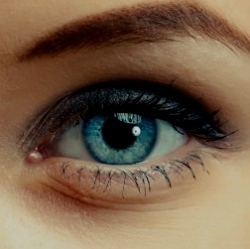
For the first time, scientists have recorded from individual brain cells during the dreaming phase of sleep. After each rapid eye movement (REM) they recorded bursts of activity that match what happens when we are awake and we see, or imagine, a new image.
They suggest that these well-known flickering movements accompany a "change of scene" in our dreams. The recordings were made from patients with electrodes implanted in their brains to monitor seizures.
"It’s a unique opportunity to look at what’s happening inside the human brain," Dr Yuval Nir, from Tel Aviv University in Israel, told the BBC. "We’re very thankful to the epilepsy patients who volunteered to take part."
Over the course of four years they worked with 19 different patients, recording from electrodes in several different brain areas but largely within the medial temporal lobe. This is not a part of the brain directly involved in vision, Dr Nir said.
"The activity of these neurons doesn’t reflect image processing. It’s more about signalling to the brain about a certain concept. When the patients were awake and shown a picture, especially one associated with a memory, the researchers saw a particular pattern of activity.
"About a 0.3 seconds after the picture appears, these neurons burst – they become vigorously active," Dr Nir explained. "This also happens when people just close their eyes and imagine these pictures, or these concepts." Intriguingly, he and his colleagues spotted a "very, very similar pattern" during sleep. In particular, these bursts arrived just after eye movements during REM sleep.
This is the phase of sleep in which we dream, and it is characterised by these occasional, very quick eye movements. It has long been thought that these movements might reflect the visual component of dreams, but there has been no clear evidence for this – until now, Dr Nir said.
"We are intimately familiar with the activity of these neurons. We know they are active every time you look at an image, or when you imagine that image. And now we see them active in a similar way when you move your eyes in REM sleep, so it becomes very probable that the eye movements represent some type of reset, or ‘moving onto the next dream frame’.
"It’s almost like when I was growing up and we had slide projectors. You move to the next dream slide, if you like."
